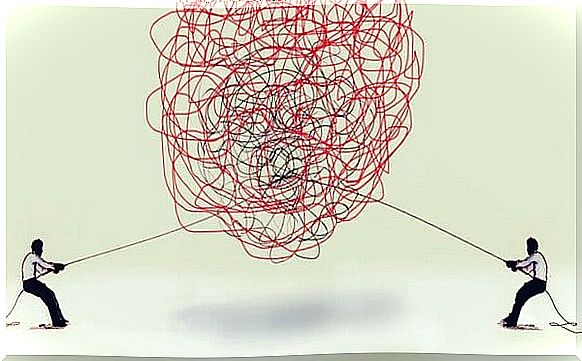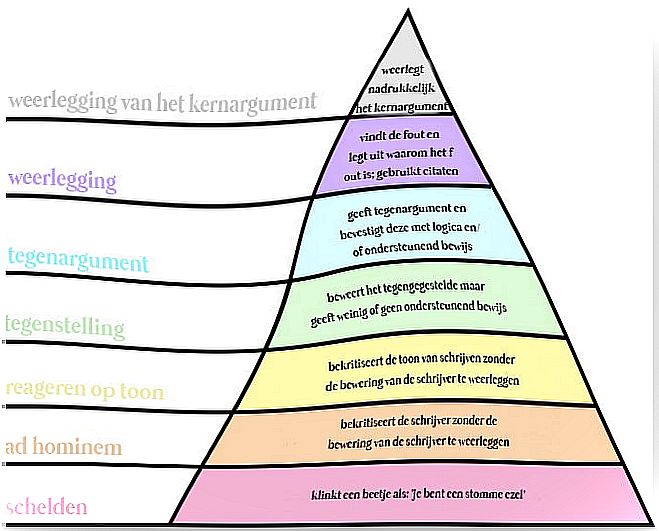Disagreeing: How To Do It Effectively (and Tactfully)

Learning to disagree effectively and tactfully is a very useful art. It allows us to avoid pointless discussions, avoid conflict and determine our position tactfully. And we can achieve all of this without being offensive or abusive. It is without a doubt a great tool that allows us to deal with disagreements in a smart way. And it is important that we learn how to apply it on a daily basis.
Because let’s face it, if there’s one thing we often don’t know how to do right, it’s showing that we disagree. Moreover, many people still think that differences of opinion equal arguing. However, this is a mistake. Disagreeing simply means that we disagree with an idea or opinion and really doesn’t have to be a threat or source of displeasure.
Another element to consider is that disagreeing with something in some aspects defines your individuality. It gives you the opportunity to have your own opinion and not just defend your ideas. You need to intelligently convey your arguments to enrich the communicative process and the relationship itself.
Today, we often see an awful lot of hostility when people disagree. Especially when both parties are firmly convinced that they possess the absolute truth. However, it soon becomes apparent that their comments do not contain any valid arguments and, almost without knowing how, an argument ensues in which no one wins and everyone loses.
It is therefore advisable to learn how to disagree tactfully and effectively in order to avoid such pointless situations. Let’s look at some strategies to achieve this.

1. Learning to disagree while remaining calm
People who are skilled at disagreement know a very simple secret. To effectively disagree, you must remain calm. You should listen carefully to the speaker and understand that nothing should be taken personally.
The moment you assume that what is being said is a threat, the argument will begin and all is lost. That is, if the person in front of you tells you that the most beautiful color in the world is green, you really don’t have to argue just because you believe it is yellow.
It is therefore a good idea to be open and relaxed. Don’t let the disagreement reach an emotional level. Also understand that to show that you don’t agree with something, you don’t have to undermine or underestimate the other person’s opinion.
2. Disagreeing is a very useful exercise
There will be plenty of cases in our daily life where we disagree with someone. People are used to seeing the world from their own point of view, and this point of view often leaves little room for that of others. Reasoning can sometimes be an impossible task, we know that. That’s why we sometimes say, either because it’s just tiring or not to waste time, that it’s better to shut up and agree than to say naturally, “I don’t agree with that.”
Make no mistake, learning to disagree tactfully and effectively allows you to do different things. First, it allows you to affirm your identity, self-esteem, and opinions. Second, it can make you much more fun. It will enrich your relationships and allow you to always be coherent with what you feel, say and do.
In fact, in work environments it is often said that if there are ten people in a meeting and they all agree, then there are nine people too many in that meeting. That is, the “boss” is not necessarily right. After all, disagreements generate ideas, in fact, they generate a wealth of ideas, they generate human capital…

3. Watch your tone next to your words
Often when we talk to someone and we choose to disagree with a fact, concept or idea, our tone changes and we raise our voice. At that point our arguments will lose all their substance because that threatening tone will give rise to a discussion and a tense atmosphere.
To avoid this, it is best to learn to control our emotions. Again, it is important to understand that if someone disagrees with something we say or think it should not be considered an attack. So let’s keep our emotions in check and watch our tone.
4. The Paul Graham hypothesis
Paul Graham is a British computer scientist and essayist who gained considerable fame after his work entitled ‘How to Disagree’ which was published in 2008. In it he explained that in order to learn to effectively disagree, we have to understand that there are certain more profitable levels of discussion. to exist. Just as there are levels where the dialogue can lead to the least useful scenario, to insults and resentment.
Therefore, in order to be effective and to disagree tactfully, we must stay on top and not descend to lower levels. We must stay within that argumentative excellence that we can learn to achieve over time.

As you can see from this diagram, you need to focus on the top four areas to handle contradictions. The fifth area onward, the areas colored yellow and pink, are based on attacks, criticisms and insults. It would therefore be ideal to achieve the following in the event of disagreements:
- Provide constructive and helpful arguments about the core argument around which the contradiction arises.
- Make your point clear with contrasting arguments and reasons that show why the other person is wrong or why what he is defending is invalid. You need to know how to deftly present counter-arguments.
- Show the other person that what he thinks or defends has no concrete and reliable evidence. This is very useful when someone, for example, tells us that what they say is true because everyone thinks it is true.
Finally…
Finally, we would like to give you one small thing. We all know that learning to disagree isn’t always easy. Discussions often become emotionally charged and we reach the point where we lose all control. Then let us understand that a disagreement is not an attack and that in reality it is a great opportunity to reach agreement, learn from others and achieve great achievements.









